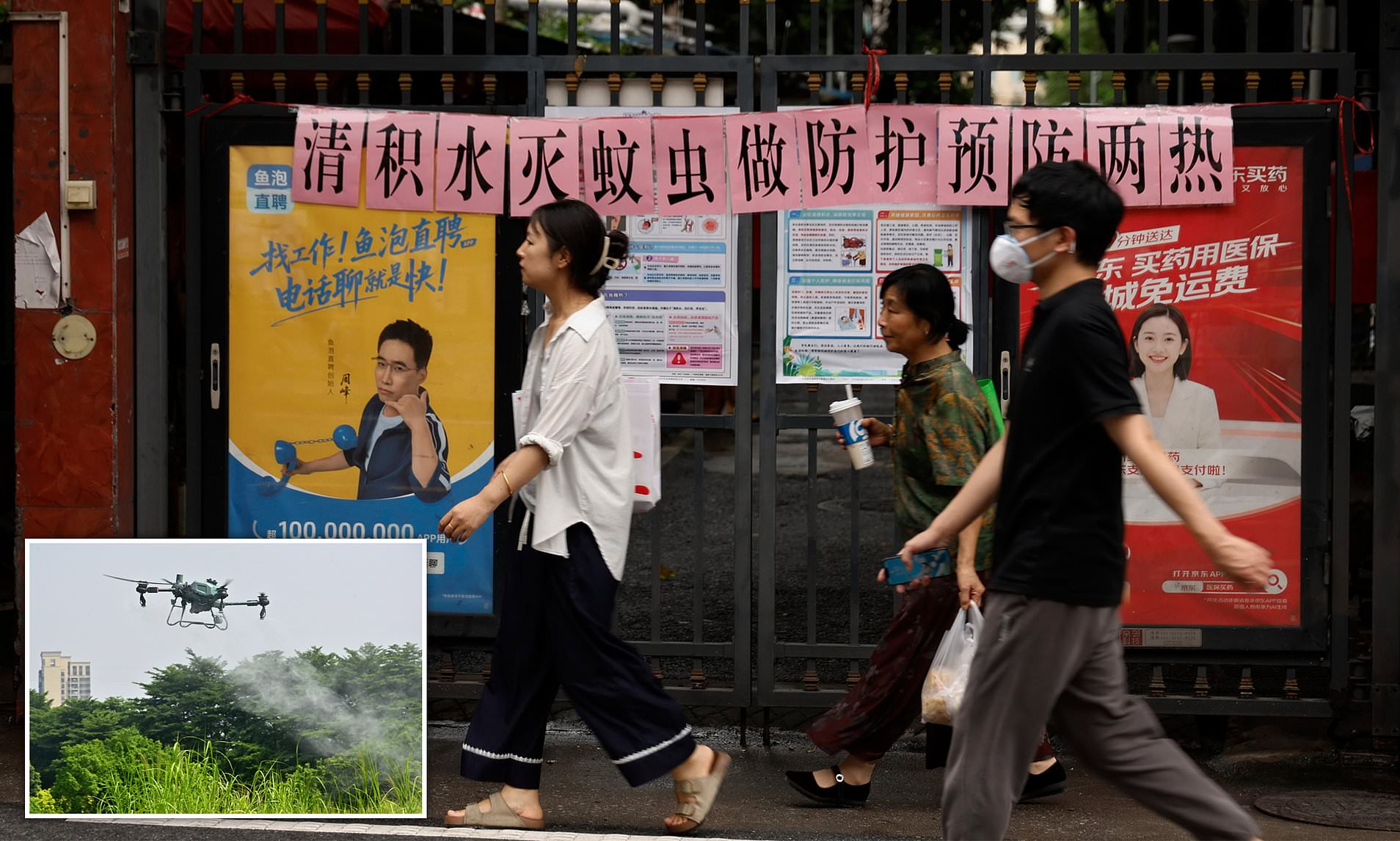China cracks down on virus as power is cut and patients locked out

Rising Chikungunya Outbreak Sparks Global Health Concerns
As the chikungunya virus continues to spread across multiple regions, officials in China and other countries are implementing stringent preventive measures to curb its transmission. The outbreak has already led to over 10,000 reported cases nationwide, with Foshan alone accounting for more than 7,000 infections. Additionally, 12 other cities in Guangdong province have recorded at least 3,000 cases each.
The virus, which causes fever, joint pain, and in severe cases, life-threatening complications involving the heart and brain, is primarily transmitted by Aedes mosquitoes—same species that carry dengue and Zika. Patients in hospitals are now required to stay under mosquito nets for up to a week or until they test negative for the virus.
Aggressive Measures to Combat Mosquito Breeding
To prevent further spread, Chinese authorities have launched extensive anti-mosquito campaigns. State workers are seen spraying disinfectant in public areas, residential neighborhoods, and construction sites. Drones are being used to locate and eliminate mosquito breeding grounds, while residents are encouraged to remove any outdoor containers that could collect water, such as bottles or flower pots.
Failure to comply with these restrictions may result in fines of up to $1,400 (10,000 Yuan) or even electricity cut-offs. Similar measures were previously used during the height of the COVID-19 pandemic, highlighting the country’s strict approach to public health crises.
In addition to these efforts, local media reports suggest that fish that eat mosquito larvae and larger mosquitoes that prey on disease-carrying insects are being introduced as biological control methods. Travelers from Foshan were initially required to undergo a 14-day home quarantine, but this measure has since been lifted.
Global Spread and Increasing Cases
Chikungunya is not limited to China. The virus has been spreading globally, prompting the Centers for Disease Control and Prevention (CDC) to issue a Level 2 travel risk notice for several countries, including Brazil, Colombia, India, Mexico, Nigeria, Pakistan, the Philippines, Thailand, and China.
According to the European Centre for Disease Prevention and Control, around 240,000 chikungunya cases and 90 related deaths have been recorded in 16 countries as of August 4. The virus has also reached Madagascar, Somalia, Kenya, India, and parts of Europe, with rising case counts reported in Samoa, Tonga, French Polynesia, Fiji, and Kiribati.
In the United States, 46 cases were reported in 2025, all contracted by travelers returning from high-risk areas. No deaths have been reported, though the CDC notes that approximately 200 travel-related cases were recorded in 2024.
Historical Context and Recent Outbreaks
The virus first gained global attention during a major outbreak between 2004 and 2005, when nearly half a million people were infected across Africa, Asia, and the Americas. In 2014, the U.S. experienced its worst year on record for chikungunya, with 2,799 cases, including 12 locally acquired infections in Florida, Texas, Puerto Rico, and the U.S. Virgin Islands.
A global spike in cases began in early 2025, with significant outbreaks reported in the Indian Ocean islands of La Réunion, Mayotte, and Mauritius. Dr. Diana Rojas Alvarez, a medical officer with the World Health Organization, warned that “we are seeing history repeating itself,” referencing the scale of the earlier epidemic.
Symptoms and Long-Term Effects
Although chikungunya is rarely fatal, it can cause debilitating symptoms, including sudden fever, intense joint pain, muscle aches, headaches, nausea, fatigue, and skin rashes. The acute phase typically lasts one to two weeks, but joint pain may persist for months or even years in some cases.
Severe complications, such as eye damage, heart issues, and nervous system problems, are rare but possible. Newborns, elderly individuals, and those with pre-existing health conditions are at higher risk of developing serious outcomes, including cardiovascular problems and potential long-term effects like Type 2 diabetes or high blood pressure.
Pregnant women who contract the virus near the time of delivery may pass it to their babies, leading to severe illness in newborns.
Treatment and Vaccination Efforts
There is currently no antiviral treatment for chikungunya, but symptoms can be managed with rest, hydration, and pain relief medications such as acetaminophen. The CDC urges travelers to high-risk areas to take precautions and consider vaccination if they are at increased risk of exposure.
In late 2023, the FDA approved a vaccine called IXCHIQ for adults aged 18 and older. In February 2025, a second vaccine, VIMKUNYA, was licensed for individuals aged 12 and above. Both vaccines are non-routine and recommended only for travelers heading to outbreak areas or for laboratory workers at risk.

Comments
Post a Comment